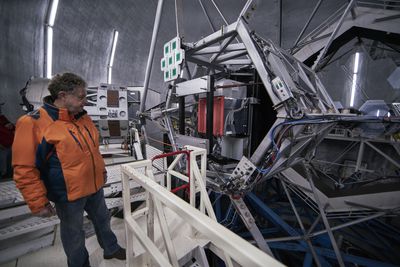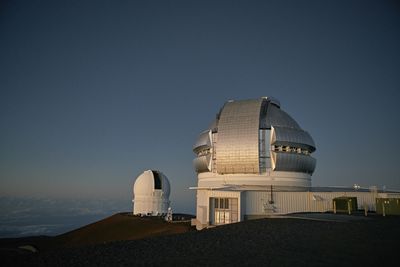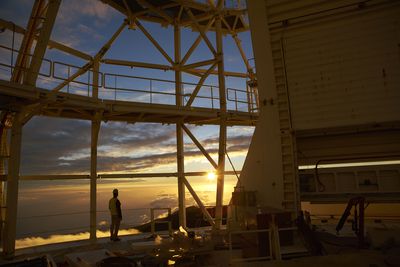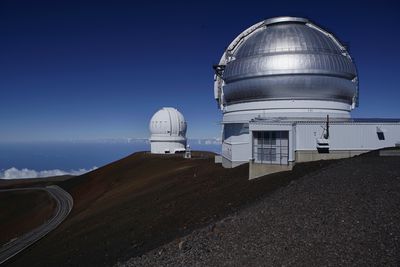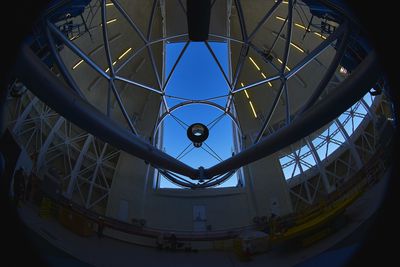Telescope
TELESCOPE, directed by Oscar(R)-nominated filmmaker Nathaniel Kahn ("My Architect, "Two Hands",) is a dynamic journey behind the scenes of the next step in the evolution of telescopes: NASA's James Webb Space Telescope. A new generation has been inspired to design and build this massive instrument, which is 100 times more powerful than the Hubble Space Telescope and will be a veritable time machine, capable of looking back on the origins of our universe and identifying signatures of potential life on planets far outside our solar system.
With unprecedented access to the people and technologies that power its creation, including astrophysicists, engineers at Northrop Grumman, and personnel from NASA'S Goddard Space Flight Center and the Space Telescope Science Institute, the operations center for Hubble and Webb, Telescope spotlights the high-stakes mission of building this massive new scientific instrument. The film is a comprehensive look at the dynamic history of 400 years of telescopes starting with Galileo in 1609. The Webb is the next great telescope in society's ongoing mission to see farther into the universe and answer fundamental questions that have haunted mankind from the beginning of time.
Building the Webb involves a thousand people from 14 countries using more than $8 billion of federal research dollars, which combine to establish the mission as one of the most ambitious scientific endeavors ever attempted. Driving the excitement and also anxiety is that unlike Hubble, Webb cannot be fixed if something goes wrong. It will be sent to the "L2" point, located a million miles from Earth, making this effort essentially "one strike and you're out." This large team from all over the world must come together for this high stakes mission and get it right the first time, when the telescope is deployed in October 2018.
For 400 years man has peered at the stars through instruments to figure out its place in the universe. With his primitive telescopes, Galileo discovered that the moon was not a perfect orb, that Venus has phases, and that the Milky Way is made of stars. Most significantly, through his observations of the orbiting moons of Jupiter, he proved for the first time that Earth is not at the center of everything. Telescope traces the entire arc of the scientific revolution, overthrowing ancient wisdom to investigate the mysteries of our origins and our future. Over the centuries, with telescopes of larger and larger apertures, scientists have peered ever more clearly into space; discovering the existence of new planets like Uranus and Neptune, proving that the Milky Way is just one of many galaxies, that the universe is expanding and that there was a Big Bang. Hubble, which turned 25 this year, took things to the next level, enabling scientists to determine the age of the universe, confirm the existence of black holes, and even analyze the atmosphere of a planet orbiting another star. The launch of the Kepler Space Telescope in 2011 yielded the paradigm-shifting discovery of planets far outside our solar system, and so numerous that for every star in the sky there is at least one planet.
As Webb launches, many in the scientific community are looking with high anticipation for the future. Telescope discusses how Webb will begin to create a map of all of the places we could potentially go someday, searching, in tandem with other new telescopes, nearby stars for habitable planets. While Webb will allow us to start to sketch out answers to many of these questions, bigger telescopes and new techniques are needed to truly understand our place in the universe and to guide us on our way towards someday making the great journey beyond our solar system.
Some of the media you are attempting to download are from Networks that limit downloads to 5 per day.
